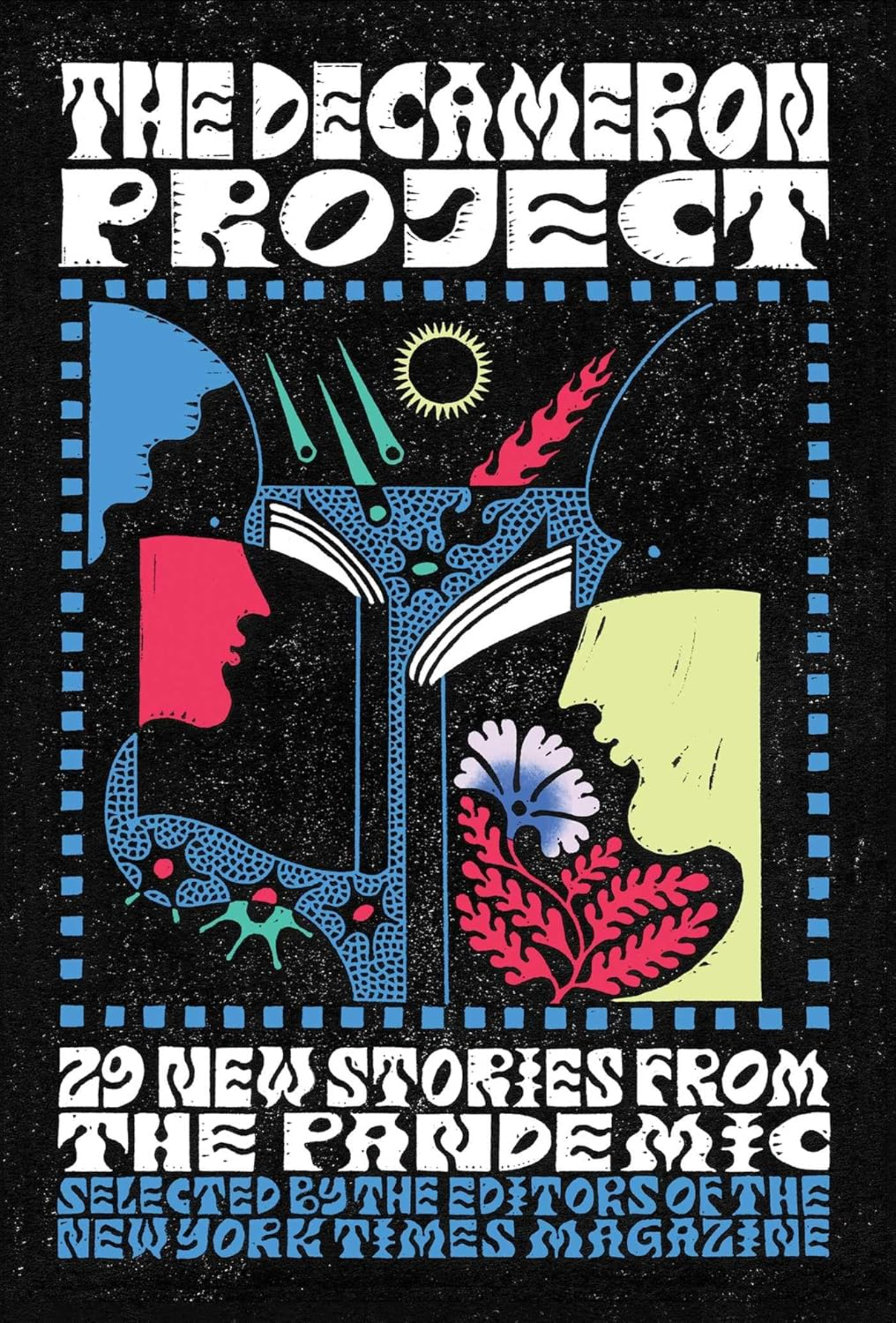The Decameron Project: 29 New Stories from the Pandemic is a collection of fictional short stories by renowned writers, including Margaret Atwood, Victor LaValle, and Edwidge Danticat, among others. It takes inspiration from the 14th century novel, The Decameron, by Giovanni Boccaccio, which featured ten young people escaping to the countryside to avoid the Black Death, and telling each other stories based on a new topic every day over two weeks. Rivka Galchen notes in her introduction that the Decameron was in itself a revival of an ancient storytelling tradition of “stories within a frame,” with the Middle Eastern One Thousand and One Nights and the Indian Panchatantra as its earliest contenders. The Decameron Project follows in the footsteps of this established storytelling practice and features 29 short stories written within the contextual and temporal “frame” of the COVID-19 pandemic, a period which is sure to bear great historical significance, just as the Black Death in the original Decameron did.
Embodying the confluence between lockdown and the increasingly digital age, Charles Yu’s “Systems” illustrates the development of the pandemic, narrated from the perspective of computer signals, which observe and rationalize human behavior through a series of search queries. “They search for: Food bank donation. Food bank near me. What is a pandemic. What is furlough. How to keep kids safe. How to keep older people safe. How old is old. Am I old” (Yu 125). Combining Yu’s expertise in experimental forms and non-fiction, the search queries underscore the ubiquitous practice of Internet use for various functions, such as seeking support, up-to-date information on the pandemic, and protective measures for oneself and their community. At the same time, the stream of questions or requests for information which continue throughout the story convey feelings of confusion and fear as people navigate a world that changes rapidly alongside the spread of a deadly virus. Viewing the pandemic through a technological lens is a stark contrast from the more common first-person accounts of lockdown. This short story presents how search queries, which are fragments of thought and can even be considered miniscule narratives, can provide an innovative mode of storytelling shaped by people’s reliance on the Internet.
In her speculative fiction piece “Impatient Griselda,” Margaret Atwood writes the extraordinary, transporting readers into impossible worlds amid the humdrum of daily life, so that readers can escape the confinement of lockdown, if only for a moment. Much like the original Decameron, “Impatient Griselda” features a story within a story: an alien using a faulty translation device narrates a fairytale rooted in “human culture,” about a pair of twin sisters who take revenge on a Duke who forcibly marries one of them, to entertain humans under lockdown in outer space. Interactions between the alien narrator and the human audiences help readers reimagine not just pandemic life but the human experience, with everything from our language, humor, and food, to the stories we tell, and how we expect them to progress and end. The alien’s attempts to adapt to human customs and fulfill human expectations of storytelling creates plenty of humorous moments, including “As we have already experienced together, you do not understand my jokes. But as you say, half an oblong wheat-flour product is better than none” (Atwood 54), prompting readers to consider the complex issue of humanity in a lighthearted way.
The Decameron Project is an example of storytelling under a pandemic, albeit several centuries after the Decameron, where ways of controlling and coping with an infectious disease have changed drastically. The collection of stories told by different narrators, bearing unique backgrounds, voices, and imaginations, display the variety of ways writers can conceive of the pandemic creatively. A function of pandemic writing is that “reading stories in difficult times is a way to understand those times, and also a way to persevere through them” (Galchen 11). Through the diversity in subject matter and forms that the stories take, they draw readers’ attention to how the pandemic shaped different aspects of life. More importantly, the stories’ unconventional narrators or perspectives helps defamiliarize pandemic experiences, to provide a sliver of surprise, mutability, and whimsy to pandemic life, much of which was characterized by stagnation and boredom, allowing people to make sense of, make peace with, and make the best out of the time spent in lockdown.

Image Captions:
Cover image of The Decameron Project: 29 New Stories from the Pandemic by Margaret Atwood et al., 1st ed., edited by Caitlin Roper, Claire Gutierrez, Sheila Glaser, and Jake Silverstein. Scribner, 2020.Citation: Atwood, Margaret, et al. The Decameron Project: 29 New Stories from the Pandemic, 1st ed., edited by Caitlin Roper, Claire Gutierrez, Sheila Glaser, and Jake Silverstein. Scribner, 2020. FICTION, SHORT STORY | US. ll
Source Type: Fiction
Country: US
Date: 10-Nov-2020
Keywords: Decameron, International, Lockdown Sketches, and Short Story Collection